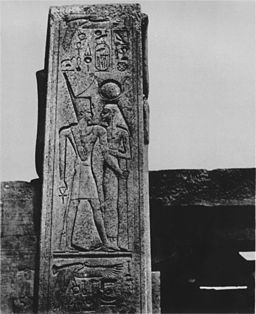Egypt
Arum and the Earliest Illustrated Plant Guide
17/06/13 /08:45 Category: Timeline

Arum is included in the first ever illustrated plant guide. Made from stone.
Arum is featured what might just be the earliest plant guide ever. Dating from an incredible 3500 years ago and located in Egypt in modern day Luxor, are pictures of two Arum species carved in stone in the temple complex at Karnak. They were created by the ancient Egyptian King Thutmos III.
Thutmos III expanded the areas conquered by ancient Egypt massively and is considered by Egyptian historians to have been a military genius. He also seems to have been a keen gardner as well. He brought back from his 'conquerings’ an ever growing collection of new and unusual of plants. Presumably keen to enthuse his fellow Egyptians with a love of botany and green-fingeredness, he ordered that carvings of these exotic new plants be created on the walls of the temple in the appropriately named 'Court of Flowers'. Though the garden which accompanied this temple, and in which many of these plants were grown, has never been found, the carvings are still there. They were partly to show off just what a great plant collector he was but also to show people what these new plants were. A kind of early 'spotters guide' I think.
They represent the earliest known illustration of Arum. and interestingly, two distinct species are depicted, which shows an attention to botanical details which was to appear only fleetingly over the next few thousand years.
Arum was considered important enough to carve into the temple walls because it was probably already an important food plant. This would likely be a variety of the tropical Arum usually known as Taro. It has large, starch rich roots which are a great source of carbohydrates. Just perfect for eating and completely unlike the roots of the European Arum we have here, which are small, deeply buried and filled with flesh-burning crystals. We'll look at this again when we get to the the role the European Arum has played as a food stuff.
So this is where our timeline of Arum begins. In ancient Egypt with the first guide to plants, as a picture book carved in stone 3500 years ago. Isn't Arum just amazing?
Read more on the iPad book here: http://tinyurl.com/wildarumipad
Read more on the iPad book here: http://tinyurl.com/wildarumipad
Comments